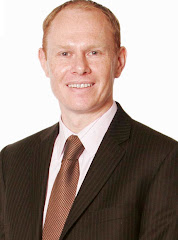On Monday in Bangalore I visited a major international IT service provider that had established an Indian presence. It was an interesting contrast to the other service providers given its global presence. There was a different feel to this service provider that in the main felt related to the fact that it was initially a global organisation that brached into India as a mechanism to deliver lower cost services as opposed to an organisation that was born and bred in India. The experience was different. It felt much more like a visit to a service provider in Europe and less that one in India. In some ways the difference was felt most palpably in how they treated their staff. Over a lunch with a range of people from different levels in the organisation (and without any management
presence) I commented that they all seemed to be very smart people and could get a job with any company. Why then had they chosen this organisation? Career opportunities and high quality training was the common theme that came through. This was a fascinating insight that proves what many organisations, including my own, think at home and most especially given the quality of the people that I met during my visit to this organisation.
Having completed my visit to Bangalore I moved on to Pune where I visited two organisations. One in particular is worthy of mention as it was such as contrast to the organisations I visited. For the sake of clarity the other organisations I visited would be regarded as tier 1 or near tier 1 organisations. This organisation on the other hand was relatively new to delivering offshore IT services. While the people we met tried their best it was clear that in terms of almost all the criteria we were evaluating they were in a different league. For this discovery alone our visit was worthwhile.
A couple of other points from my trip this week are also worth noting:
1. IT Salaries in India are growing at 15% per annum and some Indian commentators feel that very soon it will be as cheap to deliver services from parts of Europe or the USA as India. India needs to decide how to respond to this.
2. The importance of a Disaster Recovery and BCP plan cannot be overstated. One service provider we talked to told us of a recent event where one of their offshore delivery centers experienced 900mm of rain in one day alone!
3. Visas continue to be a major issue for Indian vendors wishing to provide landed resources. Those that can provide locally based onshore resources clearly have an advantage in this environment.
4. The view of individual CIOs and position in the outsourcing contract can mean that previously outsourced services are insourced to a local or captive offshoring organisation at short notice and for no obvious reason.
In less than four hours I will be heading to the airport in Chennai to fly home. It has been an interesting trip covering 4 cities and 21,000kms. It is clear to me that European organisations cannot ignore the opportunities that Indian offshore service providers offer and need to find more effective ways of leveraging them. Likewise, Indian service providers need to figure out how to continue to provide cost effective services in a high inflation environment. I look forward to seeing how things develop.
